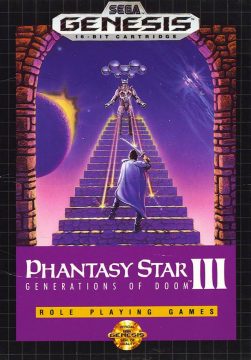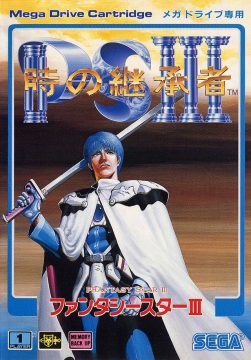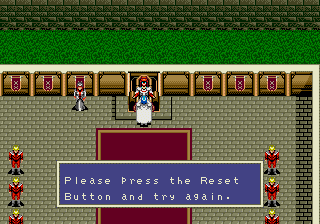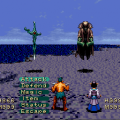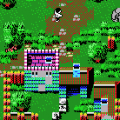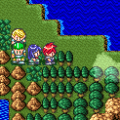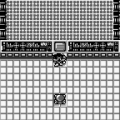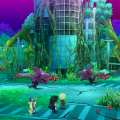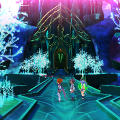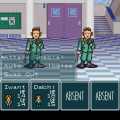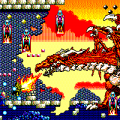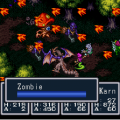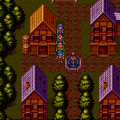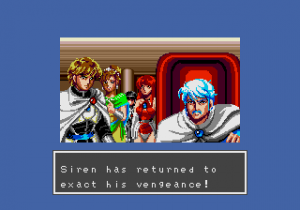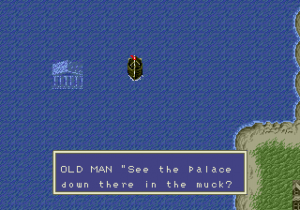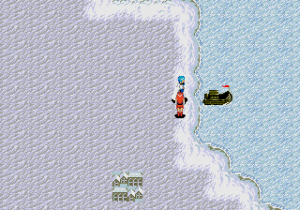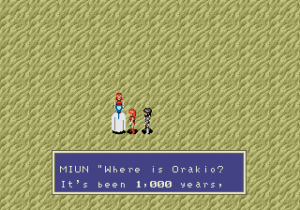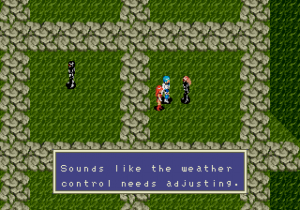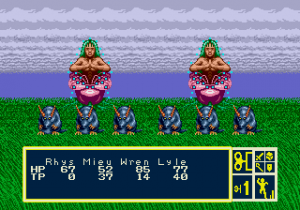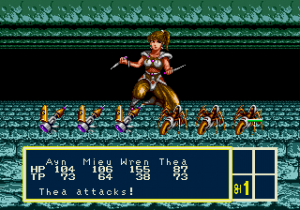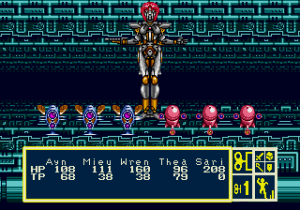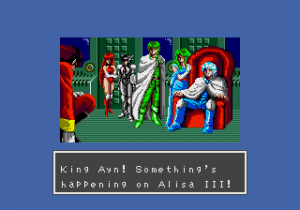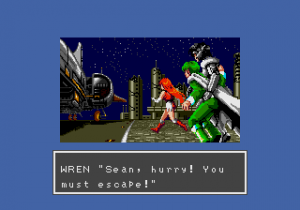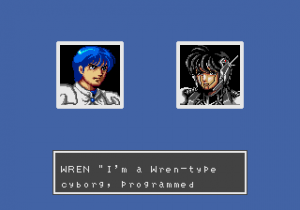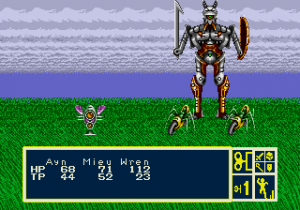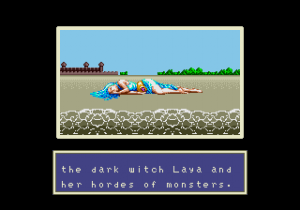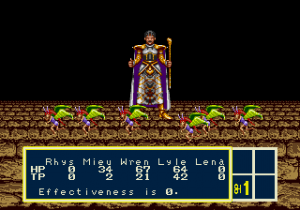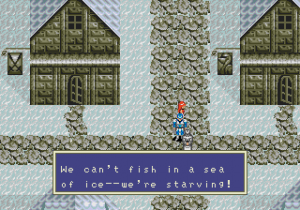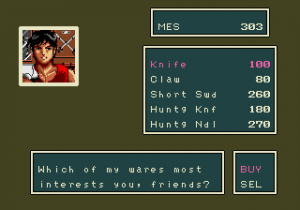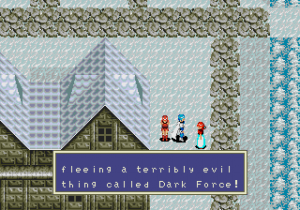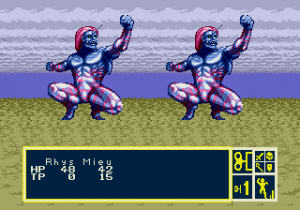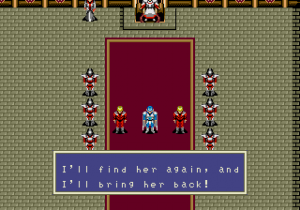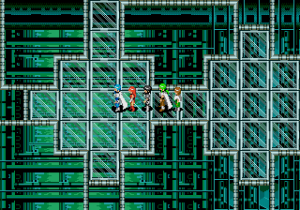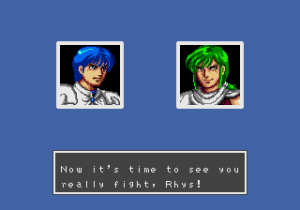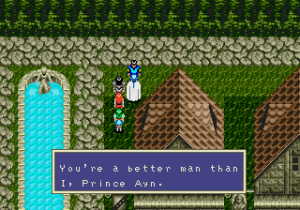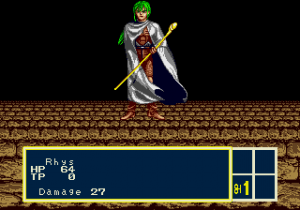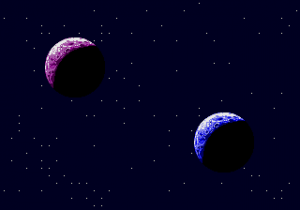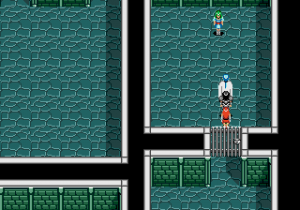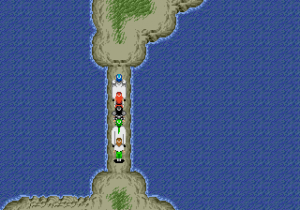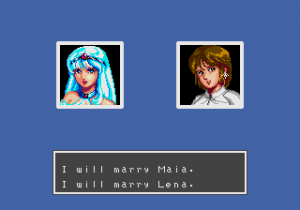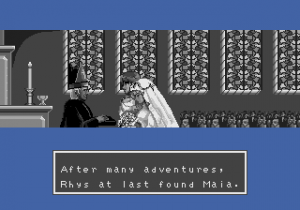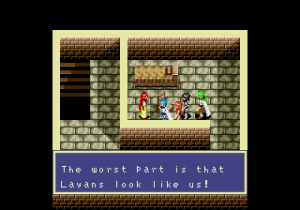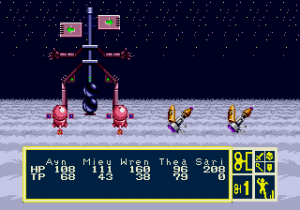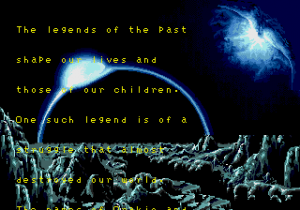The third game in the series was made by an almost entirely different team. Most of the people behind the first two games were busy with other projects, with several of them at work on their own version of Falcom’s side-scroller RPG, Sorcerian, for the Genesis, and management was not willing to wait. As the sole member of the Phantasy Star II team assigned to work on its sequel, Hiroki Saeki was promoted from co-director to lead writer and director, with a ragtag bunch of new hires and staffers from other teams working under him. Their deadline was tight, and their concept ambitious; the game was to take place across three generations, leading the player on different story routes depending on who they chose to marry at the end of the first two generations. Thus, in theory, there’d be one version of the first generation, two of the second, and four of the final chapter.
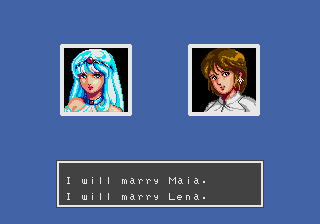
“Why not both?”
As they had neither the time nor the manpower to fully realize that vision, a lot of story content eventually had to be cut. The two second generations are different enough, but the final chapter is mostly the same regardless of who you play as, including the ending. The script is even more terse than before, with major scenes handled in three or four sentences. Where the story does work, it’s because of the ideas it contains rather than their execution; there is great material there, but none of it is fleshed out. This extends to the game’s towns; in the beginning, there is a reasonable amount of people walking about, providing world-building and a bit of flavor, but their numbers dwindle by the second generation, leaving just the bare minimum to provide hints as to where to go next.
Also upsetting to first-time players was the setting. Saeki had a great idea for a plot twist, but it required that players be kept in the dark about the exact nature of the game’s location and its connection to previous games in the series. Thus, initially, the game seems to be set in a standard medieval fantasy world, with bits of advanced technology here and there tied some ancient civilization about which nothing is known.
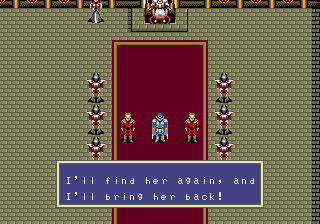
This land, you are told, is called Landen. A thousand years before, a great war took place between Orakio, who led an army of engineers and robots, and Laya, whose people fought with magic and monsters. The war ended on a stalemate, with both leaders presumably dying in the final battle, and their followers came to worship them as gods. Today, Orakians and Layans live apart and still hate each other, though the Orakians of Landen have not seen a Layan in centuries. Though Landen looks nothing like any planet of the Algo star systems, there are hints of connections here and there, such a stories of an ancient evil called Dark Force, or the currency in use being called mesetas.
The founding hero of this saga is Rhys, prince of Landen, who is set to marry a young woman named Maia, found lying on a beach a few months before with no memories of her past. In the middle of their wedding, a dragon swoops in and kidnaps Maia, cursing at the “filthy Orakians” assembled in the castle. In a rage, Rhys orders the army to follow him in war, and his father, the King, has him thrown in the dungeon. A girl named Lena helps him escape, and he sets out to find Maia, traveling to other “worlds” by traversing high-tech passages in sealed off mountain caves. There, the game establishes a pattern it will repeat with every scenario; in each of them, you will meet two women, like Maia and Lena, who will want to marry you by the end, making you king of someplace. The game will then jump 15 or 20 years ahead, when some new trouble will arise for your children to handle. In the second generations, Siren and Lune, former generals of Orakio and Laya’s army, return from a long sleep to resume their war. By the third generation, the true evil is revealed. Accompanying the heroes and their love interests through all three generations are two androids, Wren and Mieu, who tell you they were “programmed to serve you”, and little else.
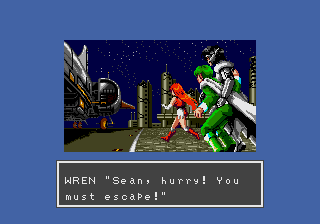
Mieu and Wren in one of the short cutscenes that bookend the third generation.
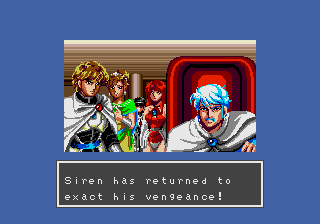
Unfortunately, illustrations such as these aren’t found anywhere else in the game, besides the intro.
It’s late in the second generation that you learn the truth of your world.
With new artists and a new composer, it’s no surprise that PSIII neither looks nor sounds anything like its predecessors. The art style is more sober, even a little plain, with a push towards realism. Neither the character sprites nor environments are quite as attractive as PSII‘s, but they have a discrete charm of their own. Towns, houses, castles and dungeons take on a more credible scale relative to the people that inhabit them. But larger environments mean more to walk, and the speed of walking was slowed down rather than increased, leading to one of the great flaws of the game: it takes forever to get anywhere.
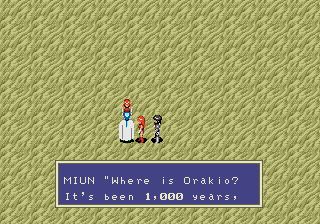
Probably went to get some Monomate.
In battle, your characters are no longer visible, and the enemies barely move. The location-appropriate backgrounds are back, sometimes featuring parallax scrolling for clouds and the like (a feature introduced in the North American version), but they aren’t as intricate as those found in Phantasy Star, released on a weaker system nearly three years before. There are now two rows of enemies in combat; the first row is occupied by small, unimpressive critters, while larger and cooler monsters usually keep to the back, where they can’t be touched by short-range weapons until the first row is cleared. It is now possible to target a specific enemy. Though the lack of character animations does speed things up a bit, the monster count can get up to 10 in a single battle, so the battles end up taking about as long. On the plus side, you can now take five characters along, and there are more weapons that damage entire rows, sometimes hard enough to wipe them all out in one go.
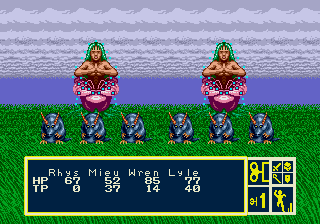
The technique system has changed some. Techs are now divided into four categories, with four of them per category. Characters who have access to a specific type of magic will have access to all these spells right away, and their power can be modified by strengthening one – say, GiRes, which heals all characters – at the cost of another (in this case, it would be Anti, which cures poison). While healing magic is essential, everything else is mostly useless, even attack magic, which isn’t any stronger than regular weapons.
Rather than the rhythmic, mostly upbeat music of the first two games, the new soundtrack, composed by Izuho “Ippo” Takeuchi, is more standard in style, with soothing town themes, mysterious temple music, and so on. It is, however, very solid. There is a grave, almost somber tone to much of it, particularly the excellent overworld music, and the nostalgic, bittersweet title theme is one of the strongest pieces of music in the entire series.
Apart from the frustratingly slow walking speed, the game is more approachable than its predecessors. The dungeons are smaller and more straightforward dungeons, and apart from a bit in the very beginning to get yourself started, level-grinding is almost never really necessary. Bosses are still too rare, however, and most of them are barely stronger than regular enemies, making for disappointing fights.
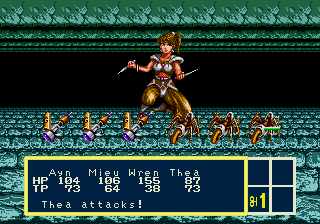
This is Sari, the Queen of Landen in Ayn’s scenario. She will not defeat you.
Unfortunately, the game has a taste for backtracking, and will send you through the same high-tech dungeon-tunnels over and over as you go back-and-forth between the different worlds. In the first generation alone, you have to slog through the passage to Aridia four times, and visit the climate center / satellite control system twice. There are no telepipes to take you back to town, either, nor teleportation centers to warp from one to another. At least you still have escapipes. Later on, Wren acquires parts that let him turn into a jet scooter, a sub, and eventually a plane, in which you can fly over the world without running into monsters, and you get to warp between worlds instantly through magic gates in small temples strewn around the world, but it all comes a bit late.
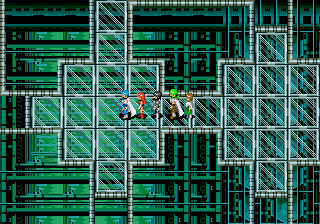
What little script Phantasy Star III has is in perfect English, which doesn’t necessarily mean it got a perfect translation. As with PS and PS2, a fan re-translation was eventually completed. The script is slightly wordier and more detailed, and generally makes more logical sense, particularly when it comes to some of the characters’ motivations. The whole “law of Orakio” and “law of Laya” thing, according to which both heroes forbade killing in their final message to their followers, is referred to in more instances, and helps to explain certain parts of the story. There’s also a bit more flavor to the dialogue, though it’s also clumsier at times. It’s got other interesting differences, possibly motivated by censorship; rather than just an ancestral enemy to the Orakians, Laya is introduced as the Goddess of Darkness, while the Layans call her the Goddess of Love. The old boat owner who takes you to the island cave to get the Sapphire early on wants a woman on-board because he likes to leer at them – his request for a cyborg as a good luck charm in the official localization never made any sense, since no other cyborg exists in Landen at the time of the game.
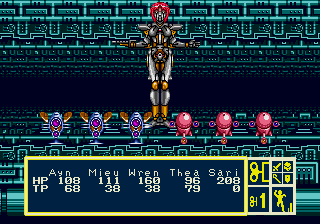
In the re-translation, Siren acknowledges that he is the original model for your companion Wren.
Though the game is not bad, it never comes close to fulfilling its potential. If ever a game screamed for a remake, it’s this one, which makes it all the more ironic that its lack of popularity has prevented that from happening so far. It’s still a far better side-story than Phantasy Star Gaiden, and it did bring the dungeon design and overall difficulty in line with the rest of genre – though some, of course, preferred the hardcore dungeons of the first two games.
A few games would reprise the generations concept; Dragon Quest V arguably did it better, while Namco’s Dragon Valor probably did it worse.
There is a rather hilarious “glitch” at the start of the game, too. Before you meet the king, you can sell your boots in order to get some cash to buy an escapipe, which you can then use to escape your cell rather than being freed by Lena. Unfortunately, this results in certain flags not being set, so you can never proceed with the story. You can, however, talk to the king, who is aware enough of the situation that he congratulates you on your resourcefulness before breaking the fourth wall by telling you to press the Reset button. If the developers knew about this, why didn’t they just have some other workaround (like not having the shop sell escapipes until after you’d escaped)? Perhaps they discovered it late in testing and left it in for a bit of self-aware fun.
Unlike its predecessors, there’s not much in the way of ports of Phantasy Star III. It shows up on the Phantasy Star Collection for the GBA with a slightly redone UI to accommodate the lower resolution and a weaker soundtrack. The other compilation versions (Saturn, PlayStation 2) include the same enhancements as prior releases, including faster walking speed and lower difficulty.
Links & Sources –
Mobygames – Credits for Phantasy Star 3 and Sorcerian (Mega Drive)
Scenery Recalled – Also known as Rebecca Capowski’s RPG-Related Translation Junk Drawer, this long, very long-running site provided the re-translated Phantasy Star III script used in the translation, and features a host of other Phantasy Star material.
